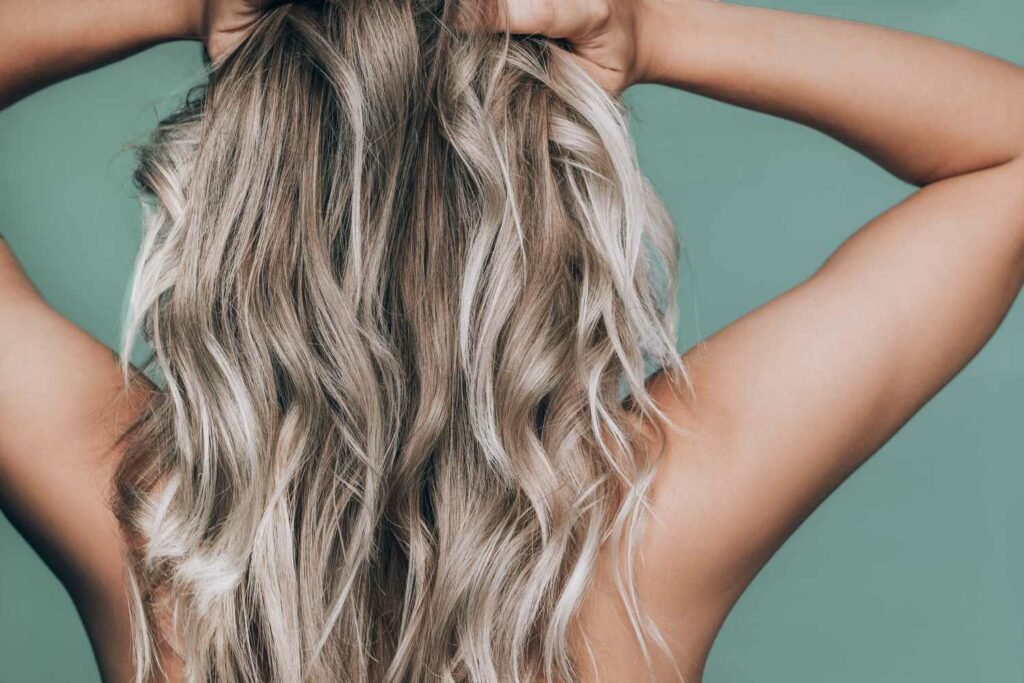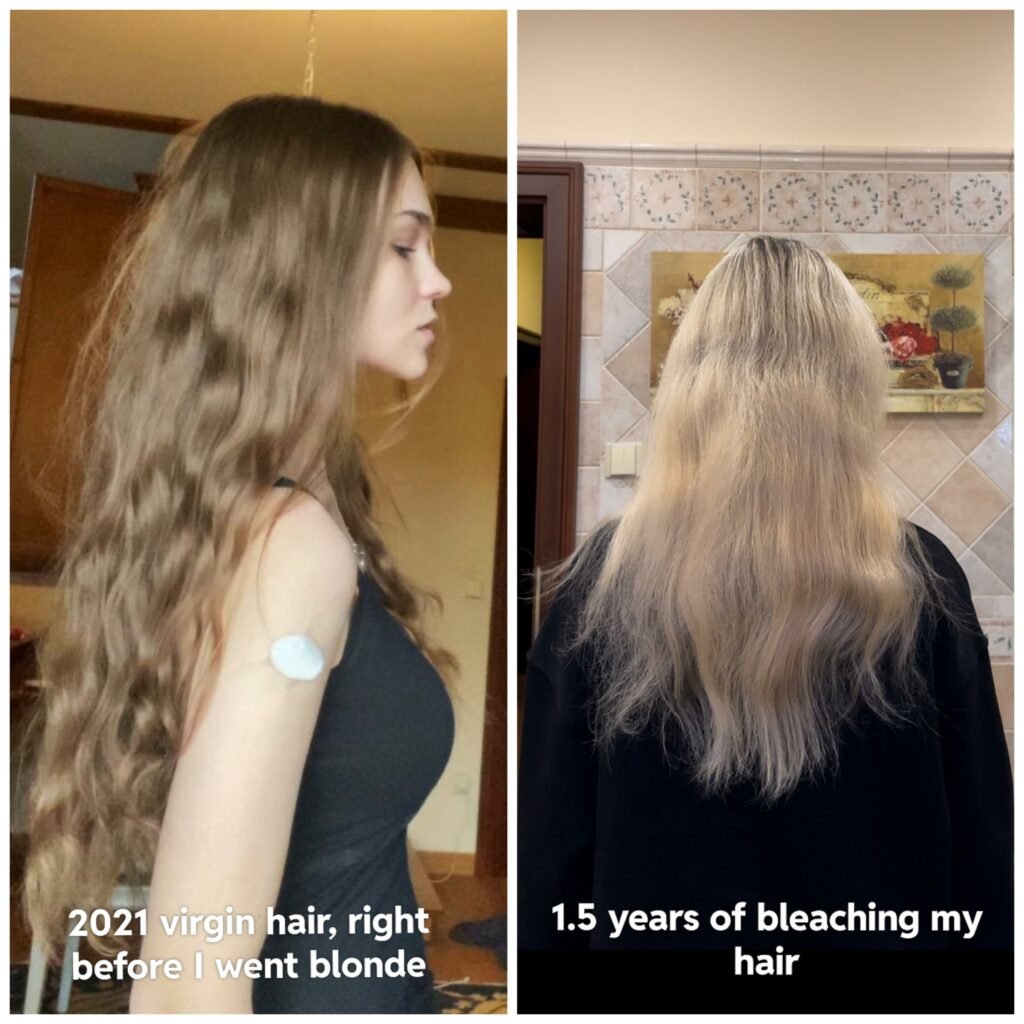Bleached hair may not take color due to its damaged cuticles, which prevent dye from penetrating. To fix this, use a protein treatment to strengthen the hair before coloring.
Having bleached hair that won’t take color can be frustrating. It’s essential to understand the reasons behind it and learn how to overcome this issue. Bleaching opens the hair cuticles, making them too porous to hold color. This results in the inability of the hair to retain dye, causing color to wash out quickly or look uneven.
In addition, damaged hair cannot effectively absorb color. By following specific steps and using the right products, you can improve the condition of your bleached hair and help it to take color more effectively. This article will provide essential tips and solutions to fix this issue and achieve the desired hair color.
Contents
Understanding Hair Porosity
Understanding your hair’s porosity is crucial when trying to understand why bleached hair may not take color. Hair porosity refers to your hair’s ability to absorb and retain moisture and chemicals, including hair color. It primarily depends on the condition of the cuticle layer – the outermost layer of your hair.
Impact Of Bleaching On Hair Porosity
Bleaching raises the hair’s porosity levels, causing the cuticle to become more raised and uneven. This makes it harder for color molecules to penetrate and be retained within the hair shaft. As a result, color may appear uneven or wash out quickly after application, leading to frustration and disappointment.
Factors Affecting Hair Porosity
- Genetics: Some individuals naturally have higher or lower porosity hair due to genetic factors.
- Chemical Damage: Previous chemical treatments, particularly bleaching, can significantly impact hair porosity and its ability to take in color.
- Environmental Damage: Exposure to sun, wind, and hard water can affect the porosity of your hair.
- Heat Damage: Excessive use of heat styling tools can also lead to changes in hair porosity.
Why Won’t My Bleached Hair Hold Color?
When you’ve bleached your hair and find that it won’t hold color, it can be frustrating and disappointing. However, understanding the reasons why this happens and how to fix it can help you achieve the vibrant hair color you desire. Let’s delve into the factors that contribute to bleached hair not holding color and explore effective solutions.
Chemical Damage From Bleaching
Bleaching removes the natural pigment from your hair, making it more porous and susceptible to damage. The chemical process breaks down the hair’s structure, which can affect its ability to retain color. Additionally, excessive bleaching can lead to irreversible damage, making it difficult for the hair to absorb and hold color. Repairing this damage is crucial in ensuring that the color adheres to the hair effectively.
The Role Of Cuticle Damage
The cuticle of the hair acts as a protective layer, and bleaching can cause damage to this outer layer. When the cuticle is compromised, the hair becomes more porous, leading to color fading and inability to hold onto pigments. Restoring and sealing the cuticle is essential in addressing this issue and enhancing the hair’s color retention capabilities.
Solutions To Fixing Color-resistant Bleached Hair
Dealing with color-resistant bleached hair can be frustrating, but there are effective solutions to help your hair take color again. By implementing the following techniques, you can achieve vibrant and long-lasting color on your bleached hair. Let’s explore the solutions below:
Deep Conditioning Treatments
Deep conditioning treatments are essential for replenishing moisture and restoring the health of color-resistant bleached hair. By using a high-quality deep conditioner enriched with nourishing ingredients such as keratin, collagen, and arginine, you can rebuild and strengthen the hair structure.
Incorporating deep conditioning into your hair care routine will improve the porosity of your hair, making it more receptive to hair color. Regular deep conditioning sessions prior to coloring can enhance the color uptake of your hair.
Acidic Hair Rinse To Seal The Cuticle
An acidic hair rinse is a vital step in preparing color-resistant bleached hair for a new color application. Using a mild vinegar rinse or a pH-balancing hair treatment can help seal the hair’s cuticle, resulting in smoother, more manageable strands that are ready to absorb the desired hair color.
This acidic rinse can help to balance the hair’s natural pH levels and prevent color fade by locking in the pigments. Incorporating this step into your hair coloring routine can significantly enhance the lasting power of your color.
Using Porosity Equalizing Products
Porosity equalizing products are specially formulated to even out the porosity of bleached hair, allowing for uniform color penetration. These products work by filling in the gaps and irregularities in the hair shaft, creating a smooth and uniform surface for the color to adhere to.
Before coloring your hair, using a porosity equalizing treatment can balance the hair’s porosity and optimize the color absorption process, resulting in a more uniform and vibrant finish.

Professional Assistance And Alternatives
Professional assistance and alternatives play a crucial role in addressing the challenges of coloring resistant bleached hair. When facing the frustration of your bleached hair not taking color, seeking professional guidance can offer beneficial solutions and prevent further damage. Additionally, understanding the best hair color options for color-resistant hair is essential to effectively address this common issue.
Seeking Professional Hair Consultation
When dealing with color-resistant bleached hair, consulting a professional hairstylist or colorist is highly recommended. They possess the expertise to assess the condition of your hair, identify the underlying reasons for color resistance, and recommend appropriate solutions.
Professional hair consultations can provide valuable insights and personalized recommendations to achieve desirable color results, ensuring the health and integrity of your hair remain a top priority.
Best Hair Color Options For Color-resistant Hair
Exploring the best hair color options for color-resistant hair is imperative to address this challenge effectively. Opting for professional-grade hair color formulations can enhance the likelihood of achieving desired results, as they often contain advanced technologies and ingredients designed to penetrate and adhere to the hair shaft effectively.
Additionally, considering alternative coloring techniques such as balayage or highlights can provide options for adding dimension and depth to the hair without relying solely on overall color coverage.
Conclusion
In the end, overcoming the challenge of bleached hair not taking color is doable. With proper preparation, the right products, and patience, you can enhance the color vibrancy of your bleached locks. Remember to nourish and care for your hair to maintain its health and shine as you experiment with different colors and dyes.

